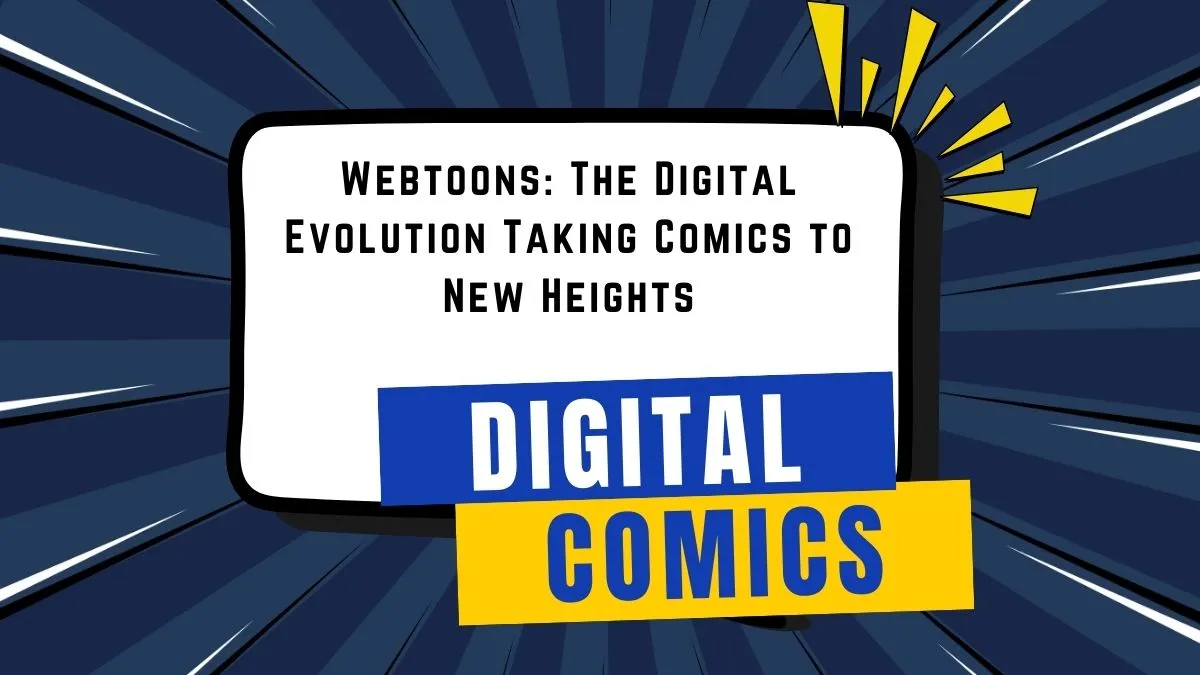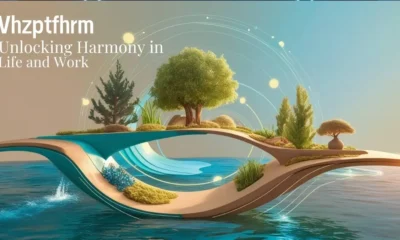GENERAL
Webtoons: The Digital Evolution Taking Comics to New Heights

Comics have been around for ages. But Webtoons? They changed the game. These digital comics, originally from South Korea, are designed for smartphones. No more zooming in on tiny panels. Just scroll. Simple. The ease of access made Webtoons a global hit. People wanted stories on the go, and Webtoons delivered. From romance to horror, every genre found a home. Unlike print comics, they bring fast updates, interactive comments, and community-driven engagement. Big names like LINE Webtoon and Tapas pushed the industry forward. And guess what? The boom isn’t slowing down. With billions in revenue and growing audiences, Webtoons are here to stay. Ready to dive into this digital revolution? Let’s explore.
The Vertical Scrolling Format: A Game Changer
Traditional comics have panels. Webtoons have a smooth, endless scroll. It’s intuitive, built for mobile screens. Readers don’t flip pages; they glide through the story. This format isn’t just convenient. It’s immersive. Dramatic pauses? Easily built with spacing. Suspense? Just scroll a little more. Unlike print, Webtoons guide emotions through pacing, not just panels. This vertical style lets artists experiment. They use creative transitions, cinematic storytelling, and even animated effects. It keeps readers hooked. Platforms like this and KakaoPage mastered this format. The result? A whole new way to experience comics. And let’s be honest. Who doesn’t love a story that flows effortlessly?
Webtoons vs. Traditional Comics: Key Differences
Comics have been loved for decades. But Webtoons? They flipped the script. Print comics rely on physical books or PDFs. Webtoons? Just open an app, and boom—you’re in. Unlike traditional comics, Webtoons don’t need speech bubbles cluttering the page. Text flows naturally, blending with the art. No weird zoom-ins, no awkward cropping. Also, it update fast. Weekly, sometimes even daily. Compare that to print comics, which take months between issues. Another big shift? Diversity. Webtoons embrace fresh voices and new genres. Traditional comics stick to superheroes. They bring slice-of-life, romance, horror—anything. The verdict? Webtoons aren’t just different. They’re redefining how we consume stories.
The Global Expansion of Webtoons
South Korea started it, but the world caught on fast. Webtoons broke language barriers, thanks to official translations and fan-driven communities. Platforms like LINE Webtoon and Tapas pushed them worldwide. The U.S., Japan, China—everyone’s on board. Hollywood took notice too. Netflix adaptations? Check. Anime series? Yup. Even K-dramas now come from this platform. The global love for Webtoons isn’t slowing down. Why? The stories feel fresh, diverse, and real. No cookie-cutter narratives. Just original content that speaks to readers everywhere. The Webtoon boom is far from over. More countries, more languages, more adaptations—It is shaping entertainment’s future.
The Business of Webtoons: A Billion-Dollar Industry
Webtoons aren’t just stories. They’re a money machine. Creators earn through ads, paid episodes, Patreon, and even merch. Some Webtoons turn into full-blown franchises—movies, games, even theme park attractions. The industry? Worth billions. Platforms like Naver Webtoon and KakaoPage rake in massive profits. The reason? Microtransactions. A few cents here and there add up fast. And let’s not forget premium content. Readers willingly pay for early access to their favorite Webtoons. The best part? Newcomers can still read most for free. That mix of accessibility and monetization keeps it thriving. This isn’t just a trend. It’s a full-fledged industry.
Why Readers Love Webtoons
They aren’t just comics. They’re an experience. Readers love them because they’re easy to access—anytime, anywhere. Unlike traditional comics, it don’t cost a fortune. Many are free, with optional paid content. Plus, the variety is insane. Love horror? It’s there. Romance? Tons. Action? Absolutely. And then there’s the community. Readers interact in comment sections, sharing theories, reactions, and memes. Webtoon creators even engage with fans directly. This interaction makes it feel alive, not just another story. The biggest reason people love Webtoons? They evolve. They change with trends, embrace new ideas, and never stop surprising.

How to Create a Successful Webtoon
Dream of making a Webtoon? It’s doable. Start with a strong story. Something unique, something gripping. Then, focus on art. You don’t need to be perfect, just expressive. Use digital tools—Clip Studio Paint, Procreate, or even Photoshop. Next? Consistency. Weekly uploads keep readers hooked. Promotion is key too. Social media, forums, even TikTok—spread the word. Monetization? Start with ad revenue, then explore Patreon, merch, or premium episodes. Most important tip? Engage with your readers. They’re your biggest supporters. Creating a Webtoon takes effort, but the reward? Worth it.
The Role of AI in Webtoon Creation
AI is changing everything, even Webtoons. Some artists use AI to generate backgrounds, speed up coloring, or enhance details. It saves time. But is AI replacing human creativity? Not yet. Webtoons thrive on originality and emotional depth—things AI still struggles with. However, AI tools are becoming more advanced. This platforms might soon integrate AI-assisted features for beginners. Some creators fear AI will flood the market with low-effort comics. Others see it as a tool, not a threat. One thing’s clear: AI is here, and it’s reshaping Webtoon creation.
Webtoons and Social Media: A Perfect Match
Social media made Webtoons explode. Twitter, TikTok, Instagram—these platforms amplify Webtoon visibility. Artists tease upcoming chapters, fans create viral memes, and entire fandoms rally around their favorite stories. TikTok, especially, is a powerhouse. A single viral video can skyrocket a Webtoon’s popularity overnight. Creators who leverage social media see faster growth. Engagement isn’t optional; it’s essential. A Webtoon without social media presence? It’s like shouting into the void. To succeed, creators must be where their readers are—online, scrolling, and searching for the next big story.
Challenges and Controversies in the Webtoon Industry
Webtoons may be booming, but they’re not without problems. One big issue? Plagiarism. Some artists steal ideas or styles, leading to messy legal battles. Another concern? Creator burnout. The pressure to release weekly updates can be brutal. And let’s talk pay. Not all Webtoon artists earn well. Some platforms offer low revenue splits, leaving creators struggling. There’s also the debate over free vs. premium content. Some readers hate paywalls, while creators need income. It’s a tricky balance. Webtoons revolutionized storytelling, but the industry still has growing pains.
The Future of Webtoons: What’s Next?
What’s coming next? More innovation. More global reach. Webtoons might soon integrate VR, interactive elements, or even AI-generated stories. Platforms will expand, bringing more diverse voices. The business model? Likely to evolve, offering better revenue for creators. And print comics? They won’t disappear, but Webtoons will dominate. The future of Webtoons isn’t just bright—it’s limitless.
Conclusion
Webtoons transformed comics. They made storytelling more accessible, interactive, and global. Whether you’re a reader, creator, or investor, the Webtoon wave isn’t slowing down.Therefore, it’s time to embrace the future of digital comics.
-

 BIOGRAPHY5 months ago
BIOGRAPHY5 months agoBehind the Scenes with Sandra Orlow: An Exclusive Interview
-

 HOME12 months ago
HOME12 months agoDiscovering Insights: A Deep Dive into the //vital-mag.net blog
-

 HOME1 year ago
HOME1 year agoSifangds in Action: Real-Life Applications and Success Stories
-

 BIOGRAPHY12 months ago
BIOGRAPHY12 months agoThe Woman Behind the Comedian: Meet Andrew Santino Wife




























